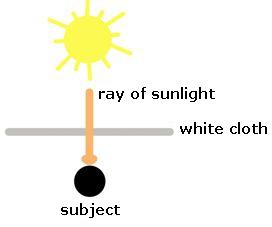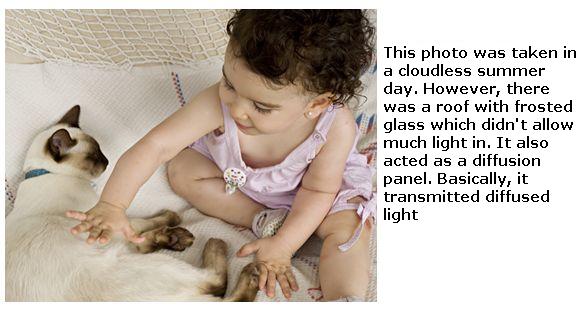Example 1
Let's imagine we are shooting a portrait outdoors under sunlight, and the model is illuminated by the sun directly. We are taking the pictures in a summer day at noon. Therefore, the sun is directly above the head of the model. Whenever light is above the model, we find shadows beneath the eyes, under the nose, sometimes under the lower lip, and under the chin. Sunlight at noon is not the best kind of light for shooting portraits because shadows are generally quite dark (we loose detail: for example, the look) and skin texture and imperfections are highlighted.
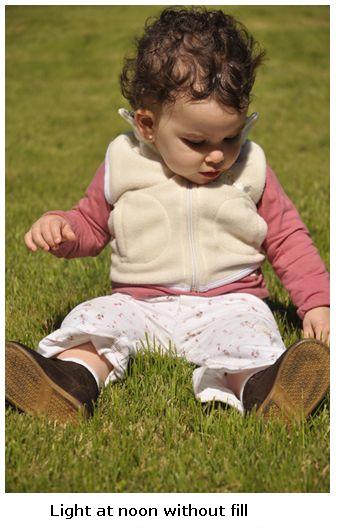
How can we improve the quality of light reaching a model/subject to improve the photograph? We have 2 choices using 2 different light properties.
1. We can use direct or diffuse light: what we need to do is reflect sunlight to the face of the model to fill the shadows (make them brighter) and achieve a softer and less contrasting light. What we need to do is use a white surface which reflects light (a white cardboard, for example), and we will place it in front, under the model, for sunlight to be reflected from this surface to the face of the model. We need to find the right angle by moving the cardboard until we see that the reflected light fills the shadows on the face of the model. This is something visible, so if you see no change as you place the cardboard, you need to move it until you find the effect you are looking for. You can use a white surface, a silver surface (it renders a cooler, bluish tone), a golden surface (warmer, orange tone) or a coloured surface (to achieve a specific effect). This solution can only be used, generally, when we are shooting portraits or half-body pictures. If we are shooting full body pictures, specially if the model is standing, it is more complicated to achieve the desired results using this method.
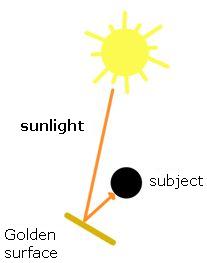
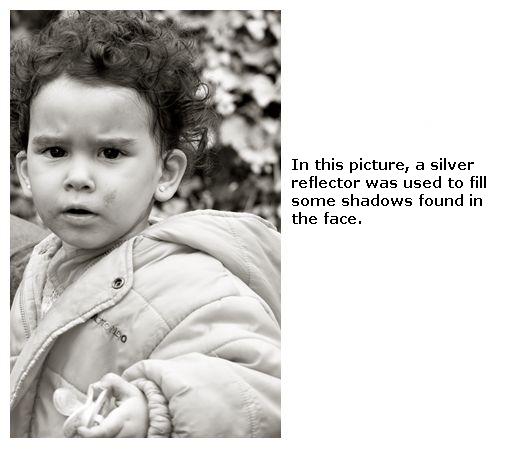
2. We can use diffuse transmission: what we need to do is place a neutral colour surface (white or natural colour) between the sun and the model and allow a certain amount of light go through to the model. What we are doing is transforming direct light (intense, with high contrast and dark shadows) into a more diffused light (softer, less contrast and smoother shadows). Of course, this surface can't be a part of this photograph. By doing this, the shadows in the face will be clearer (they sometimes even disappear) and reduce skin imperfections. The background of the picture will still be illuminated by direct sunlight resulting is a higher contrast and darker shades.
